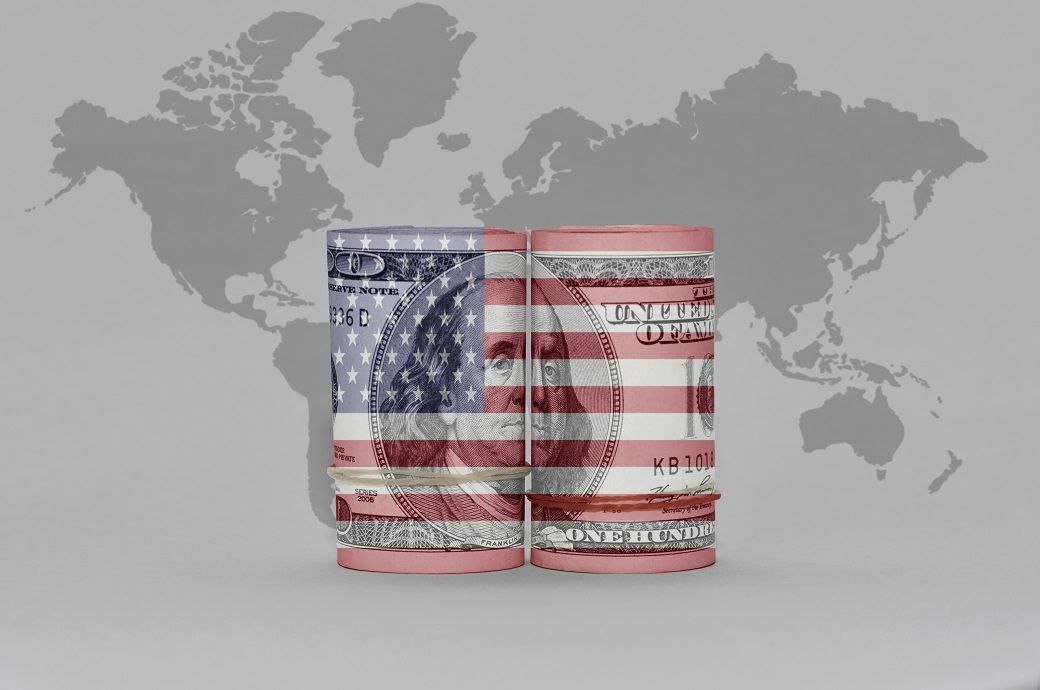But in a world reshaped by shifting alliances, rising protectionism, and geopolitical realignment, the once-undisputed reign of the greenback seems no longer immune to challenges. As geopolitical tensions rise, trade fragmentation grows, and alliances shift, there are growing concerns about the dollar’s future as the sole cornerstone of the global economy.
The numbers still tilt heavily in the dollar’s favour, though!
Despite holding a central role in global finance for decades, the US dollar’s supremacy is increasingly being challenged due to geopolitical shifts, protectionist policies, and efforts by emerging economies to reduce reliance on it.
The reciprocal tariffs under President Trump and ongoing geopolitical realignments have intensified concerns about the ‘weaponisation’ of the US dollar.
Between 1999 and 2019, it accounted for 96 per cent of trade invoicing across the Americas, 74 per cent in Asia-Pacific, and 79 per cent elsewhere, reports claimed, citing the US Federal Reserve. Its utility remains unmatched in the foreign exchange market, where it features in approximately 88 per cent of currency exchanges.
Reports further add, around 59 per cent of all foreign currency reserves held by central banks remain dollar-denominated, underlining the dollar’s perceived stability and convertibility.
Yet, dollar exceptionalism is no longer unchallenged. As the global economic order is entering a phase of recalibration, driven by protectionist policies, there is a growing desire among emerging economies to insulate themselves from what they perceive as the “weaponisation” of the greenback, feel many.
This undercurrent of unease, catalysed by the Trump-era trade wars and tariff threats, has grown stronger with every political shock and supply chain disruption, if reports are to be believed.
The last BRICS summit- BRICS originally composed of Brazil, Russia, India, China and South Africa- brought the issue to the fore amidst Trump’s threat of a proposed 100 per cent tariff tied to the so-called de-dollarisation efforts by the BRICS.
As per many, the efforts to reduce global reliance on the US dollar have long been in discussion, with countries increasingly exploring alternative mechanisms for cross-border payments—including the occasional push toward blockchain-based solutions.
More recently, China and Indonesia have taken a tangible step by launching a local currency settlement framework aimed at boosting the use of their domestic currencies in bilateral trade and investment. The initiative builds on a memorandum of understanding signed in May, which expanded an earlier agreement to include all balance-of-payments items.
There have also been reports earlier of China and Russia conducting trade using their own currencies, while some countries also reportedly actively advocated for agreements that promote trade in local currencies or adopt alternative settlement benchmarks.
So, while the global financial system continues to revolve around the US dollar—reinforcing its role as the dominant reserve currency—some analysts argue that shifting geopolitical dynamics, the impact of US tariffs and protectionist policies, and shrinking margins on exports to the US could drive a gradual realignment, leading countries to reduce their dependence on dollar and opt to settle non-US trade in local currencies.
Fibre2Fashion News Desk (DR)
